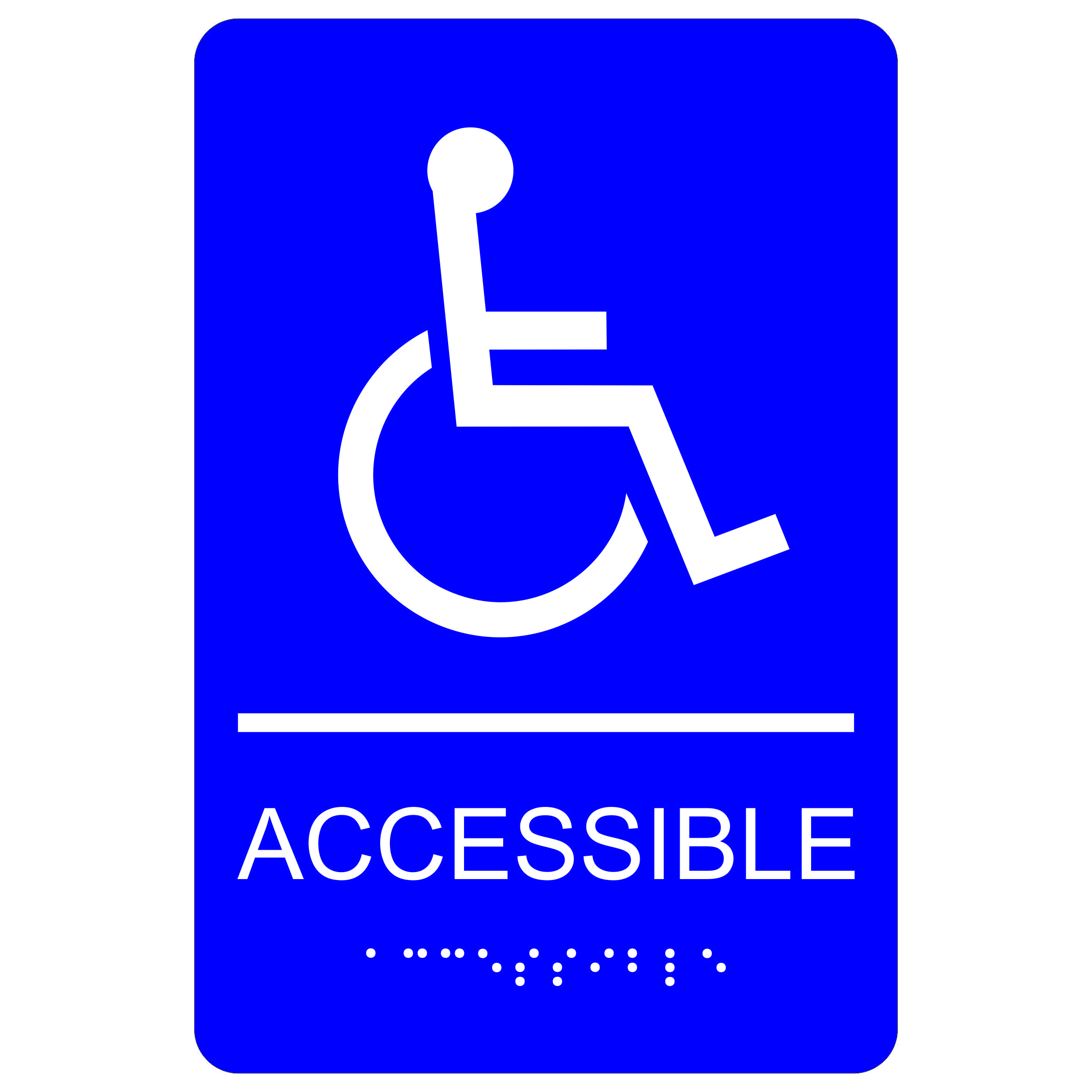ADA Signs: Vital Tools for Inclusive Atmospheres
ADA Signs: Vital Tools for Inclusive Atmospheres
Blog Article
Discovering the Trick Features of ADA Signs for Boosted Availability
In the realm of accessibility, ADA indications serve as quiet yet effective allies, making sure that spaces are inclusive and navigable for individuals with specials needs. By incorporating Braille and tactile components, these indications break obstacles for the aesthetically damaged, while high-contrast color design and understandable typefaces provide to diverse aesthetic requirements. In addition, their strategic placement is not arbitrary however rather a calculated effort to facilitate smooth navigation. Beyond these functions exists a much deeper narrative concerning the evolution of inclusivity and the recurring commitment to producing fair rooms. What a lot more could these signs represent in our search of universal ease of access?
Importance of ADA Conformity
Ensuring compliance with the Americans with Disabilities Act (ADA) is important for cultivating inclusivity and equal accessibility in public areas and offices. The ADA, established in 1990, mandates that all public centers, companies, and transportation services suit individuals with impairments, guaranteeing they appreciate the exact same legal rights and possibilities as others. Compliance with ADA criteria not only fulfills legal obligations but also boosts a company's track record by demonstrating its commitment to diversity and inclusivity.
One of the essential elements of ADA compliance is the execution of accessible signs. ADA indicators are designed to make sure that people with disabilities can easily navigate through buildings and areas.
Additionally, sticking to ADA guidelines can mitigate the risk of lawful consequences and potential fines. Organizations that fall short to abide with ADA standards may face charges or legal actions, which can be both harmful and monetarily challenging to their public picture. Thus, ADA compliance is indispensable to promoting a fair environment for every person.
Braille and Tactile Elements
The incorporation of Braille and tactile elements into ADA signage symbolizes the principles of ease of access and inclusivity. It is typically put below the matching message on signs to ensure that individuals can access the details without visual support.
Responsive elements expand beyond Braille and include elevated characters and icons. These elements are made to be noticeable by touch, allowing people to identify room numbers, bathrooms, leaves, and other vital areas. The ADA establishes certain guidelines relating to the dimension, spacing, and placement of these responsive components to enhance readability and ensure consistency throughout different atmospheres.

High-Contrast Shade Systems
High-contrast color design play a pivotal role in boosting the presence and readability of ADA signs for individuals with aesthetic impairments. These plans are important as they take full advantage of the distinction in light reflectance between message and history, guaranteeing that indications are easily noticeable, also from a distance. The Americans with Disabilities Act (ADA) mandates the usage of details shade contrasts to suit those with restricted vision, making it an important aspect of conformity.
The effectiveness of high-contrast colors depends on their capability to stand apart in numerous lighting conditions, including poorly lit settings and locations with glare. Typically, dark message on a light history or light text on a dark history is utilized to attain optimal comparison. Black message on a yellow or white background supplies a plain aesthetic difference that assists in fast acknowledgment and comprehension.

Legible Fonts and Text Dimension
When considering the design of ADA signs, the selection of clear typefaces and suitable text dimension can not be overstated. The Americans with Disabilities Act (ADA) mandates that font styles need to be not italic and sans-serif, oblique, script, extremely ornamental, or of unusual kind.
According to ADA standards, the minimal message elevation ought to be 5/8 inch, and it needs to enhance proportionally with seeing range. Uniformity in message size adds click this to a natural aesthetic experience, helping people in navigating atmospheres efficiently.
Moreover, spacing in between letters and lines is indispensable to readability. Sufficient spacing prevents personalities from appearing crowded, boosting readability. By adhering to these requirements, developers can substantially enhance availability, making certain that signs serves its intended function for all people, despite their visual abilities.
Efficient Positioning Strategies
Strategic placement of ADA signs is essential for maximizing Web Site accessibility and ensuring conformity with lawful criteria. ADA guidelines stipulate that indicators ought to be mounted at an elevation in between 48 to 60 inches from the ground to ensure they are within the line of sight for both standing and seated people.
Furthermore, indicators must be positioned adjacent to the lock side of doors to allow simple recognition prior to entrance. Consistency in sign positioning throughout a facility boosts predictability, decreasing confusion and improving general user experience.

Conclusion
ADA indicators play a crucial duty in advertising availability by integrating functions that deal with the demands of people with handicaps. Incorporating Braille and tactile components guarantees crucial details comes to weblink the aesthetically impaired, while high-contrast color pattern and understandable sans-serif font styles improve exposure across various lighting problems. Efficient positioning techniques, such as ideal placing elevations and calculated areas, better promote navigating. These aspects collectively foster a comprehensive setting, emphasizing the relevance of ADA compliance in guaranteeing equal gain access to for all.
In the world of accessibility, ADA indicators serve as silent yet powerful allies, ensuring that rooms are inclusive and accessible for individuals with handicaps. The ADA, enacted in 1990, mandates that all public facilities, companies, and transport solutions suit people with disabilities, guaranteeing they delight in the very same civil liberties and chances as others. ADA Signs. ADA indicators are made to guarantee that people with specials needs can conveniently navigate with spaces and structures. ADA guidelines specify that signs should be placed at an elevation between 48 to 60 inches from the ground to guarantee they are within the line of sight for both standing and seated people.ADA indications play a crucial function in promoting availability by incorporating features that resolve the requirements of individuals with specials needs
Report this page